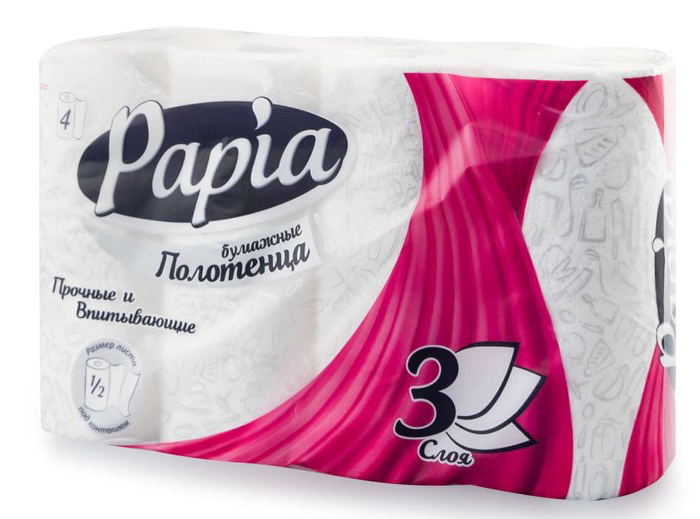Contents:
- Cleaning means for acrylic bath
- Care for enameled tub
- Care for ceramic washbasins and toilets
- Care for metal kitchen sinks
- Cleaning of pipes
- Cleaning of mixers
Proper care for plumbing involves the use of detergents and cleaning agents that effectively remove contaminantsand disinfect the surface, but they will not damage the upper protective layer and disrupt the decorative properties of the instruments. Means for the care of sanitary equipment can be in the form of powders, gels, foams, liquids, creams and granules. Each of them possesses a set of qualities necessary for the processing of a certain type of sanitary ware: for example, the removal of calcareous plaque, the fight against fungus, disinfection, the formation of a protective film, etc. Therefore, the search for a household chemical must begin with the definition of properties that it must possess.

Acrylic bath cleaner
There are damage-proof steel or cast iron baths with enamel coating and care-required acrylic products. To ensure that this bath lasts a long time, keeping the original look, you must follow the rules for the care of acrylic surfaces.
- Do not put metal objects inside the tub.
- Do not use household chemicals designed to clean surfaces from other types of material.
- Exclude agents with ammonia, acetone, chlorine and abrasives that can damage the surface. For processing use soft sponges or napkins.
- When bathing animals, you should cover the bottom with a special rug, prepared for these needs.
- After using the chemical, wash the surface of the bath with clean water.
- It is undesirable to pour very hot water into the tub.
- After taking a bath, it should be washed with detergent, rinsed and wiped dry with a soft cloth.
- The acrylic bath should have a uniform consistency without lumps and abrasives. Before applying a new drug( even if it is intended for acrylic), it should be tested on a small surface area.
The most effective, according to consumers, are the following tools:
- "Acrylan";
- Cif;
- Team Profi;
- "Mr. Chister";
- Bass;
- Acryl Polish;
- Triton;
- Ravak Clener.
Acrylic allows you to quickly get rid of mold, lime scale, soap residue and rust traces. The product is soft and does not destroy the surface of the acrylic bath. Ravak Clener is economically spent and easily copes with calcareous deposits, in addition, it updates the protective layer.
Board
The Ravak range cleans, disinfects and repairs the coating. If you need a bath gel from acrylic, you should pay attention to the inexpensive and effective remedy Ravak.
Team Profi - means that do not have any abrasives. The composition gives shine and forms a strong protective film. A product Acryl Polish will help polish and remove minor scratches.
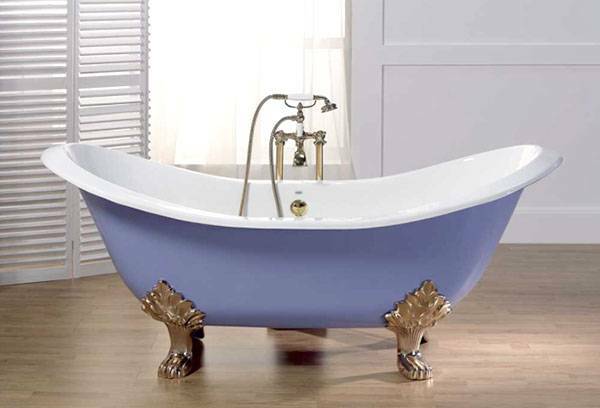
Care for enameled tub
For the care of the surface of the enamel bath, the usual home remedies are often used. To give the gloss and purity of the enamel bath, it is treated with a cleaning agent without abrasive and washed.
Calcareous lime is removed with turpentine. A small amount of solvent is applied to the contamination, and after it is removed it is washed off with a detergent solution.
Rust traces can be eliminated with a mixture of ammonia and hydrogen peroxide in a ratio of 2: 1.This composition is moistened with "red" streaks, and then washed with water. From old spots will help a solution of vinegar 1: 1 with water and a pinch of salt.
For bleaching an enamel bath, you should purchase an appropriate detergent:
- Lemon Fresh;
- Screen;
- Springclean Spray;
- TD 10.
Important!
All these products can be dangerous for enamel that has not been fired or restored. In order to preserve the enamel, do not keep the bath for a long time with water, be sure to wash it and wipe it after every bath.
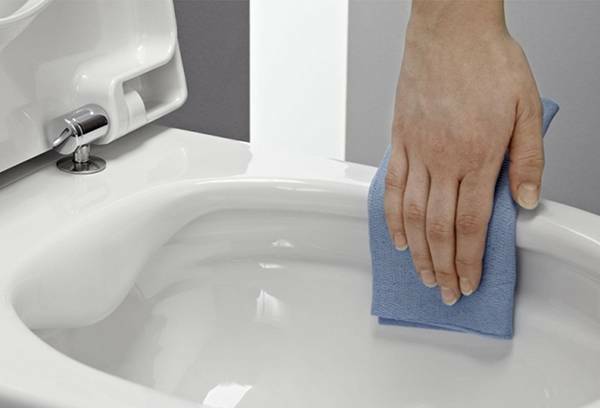
Care for ceramic washbasins and toilets
Most pastes and powders for cleaning sinks from sanitary ware include, to varying degrees, abrasives: pumice, ground quartz, chalk, drill, etc. They can also contain surfactants, sodium phosphates, chlorine.
The qualitative chemistry for washing the toilet bowl must meet a number of requirements:
- to deal with lime scale;
- clean household waste;
- eliminate stains of rust;
- disinfect the surface.
At the heart of the chemistry intended for washing toilet bowls, there can be some of the listed substances.
- Chlorine.
Chlorine in the detergent bleaches, cleans and destroys the pathogenic microflora.
- Alkalis and acids.
Alkalis readily dissolve greasy soils. Means containing an acid concentrate are effective against calcareous deposits, rust, but require extreme caution in the application. In case of contact with eyes and mucous membranes, sulfuric or hydrochloric acid may cause a chemical burn.
- surfactant.
The most harmless are cationic and anionic surfactants. In the composition of cleaning agents should not be more than 15% of non-ionic surfactants.
According to consumers' estimates, the most effective means for washing toilet bowls are:
- Comet;
- Cillit Bang;
- Sanfor 10 in 1;
- "Dressing duckling";
- Sanox Ultra;
- Sanita - gel anti-rust;
Dressing duckling, Cillit and Domestos are concentrated gels with acids, and Comet 7 is worth purchasing if you need to provide a lasting effect. Cope with the rusty rusty stains can gel Cillit Bang, Domestos, Sanita, and disinfected and bleached - Sanfor 10 gel in 1 with chlorine.
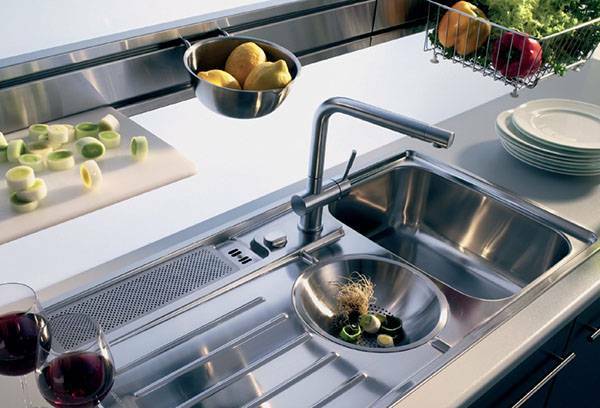
Care for metal kitchen sinks
Cleaning the stainless steel washer is not difficult. After use, it is simply treated with a cleaning or detergent, washed with water and wiped dry with a napkin.
Such surfaces are very prone to oxidation and the appearance of dark spots.
Home remedies for darkening are:
- table vinegar;
- baking soda;
- potato starch.
Council
Any stainless steel products can be whitened with starch or broth in which potatoes were cooked. This hot liquid is flooded with a darkened shell, you can also rub the stains with potato starch.
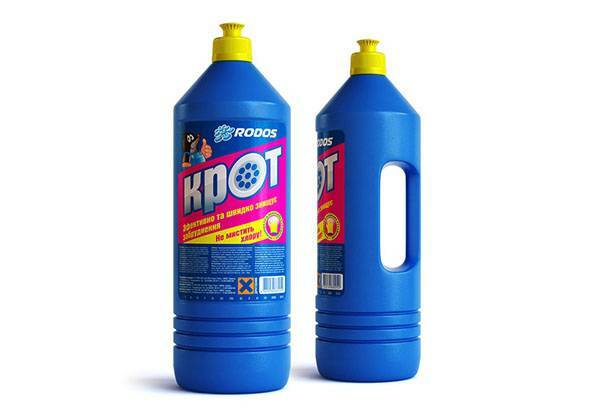
Cleaning of pipes
Chemistry for eliminating blockages in pipes is safe for products from any material( including plastic).The means for cleaning the pipes differ somewhat in the nature of the action.
- Gel "Tiret Turbo" eliminates blockage in just 5 minutes.
- Clorox operates even faster, according to consumers, it cleans the pipe in 30 seconds.
- Luxus is indispensable for shower cabins and baths. It dissolves fat, dirt and hair.
- Granular "Mr. Muscle" is able to eliminate blockage for a single use.

Cleaning the mixers
Many sanitary ware are made of metals and alloys, and can also have gold plated or chrome plated coatings. To clean these parts, you can not use pastes with large particles of abrasive.
Aluminum products are wiped with a mixture of 10% ammonia and water with the addition of 30 g of borax, then washed with water. Copper, bronze, brass or silver details are rubbed with various pastes with a piece of woolen cloth. Chromed or nickel-plated surfaces are cleaned with chalk powder.
Effective means for cleaning metal sanitary ware are recognized:
- Pulirapid;
- Groh clean;
- Ravak;
- Cillit Bang;
- "Summa Effect".
The main condition for efficient maintenance of plumbing is the regularity and the correct choice of household chemicals. At the same time, care for plumbing should correspond to the type of surface, so as not to damage the decorative protective layer. If you follow simple recommendations, you can extend the life of products for several years or more.

